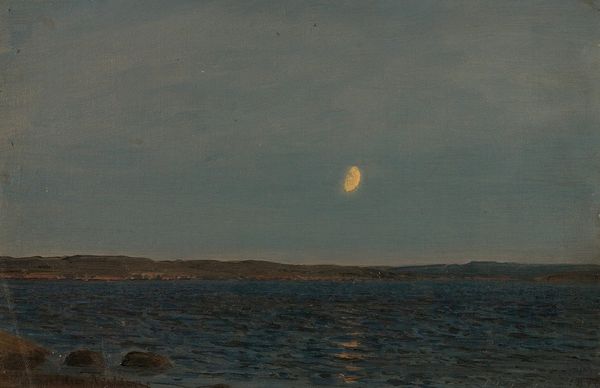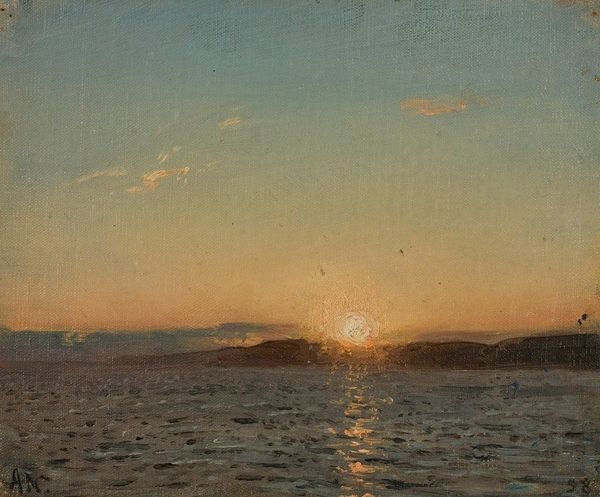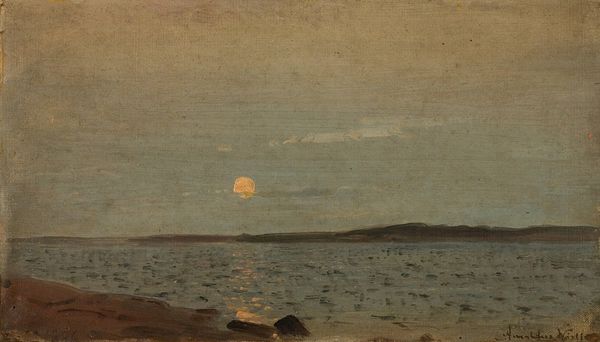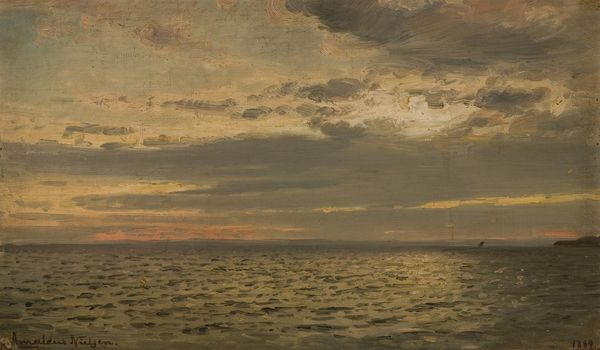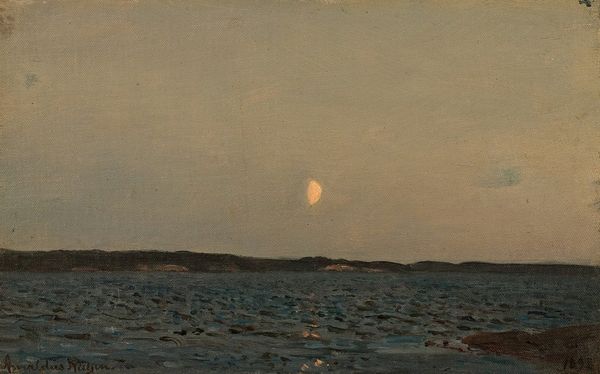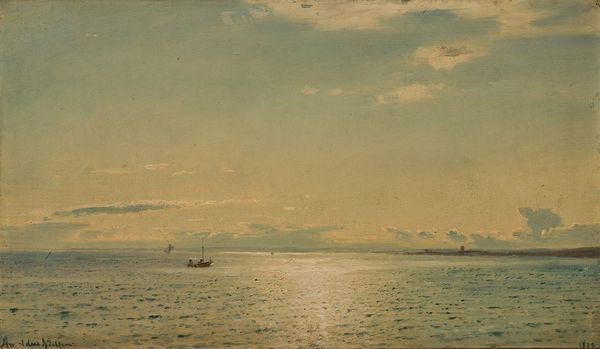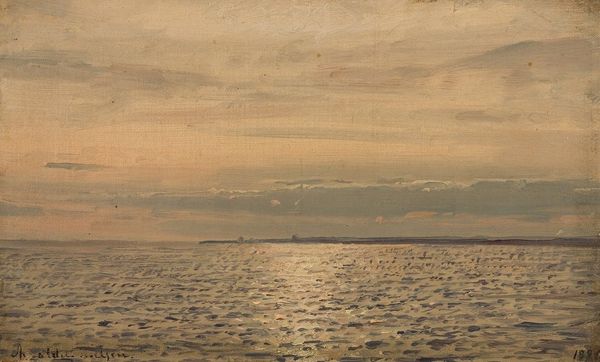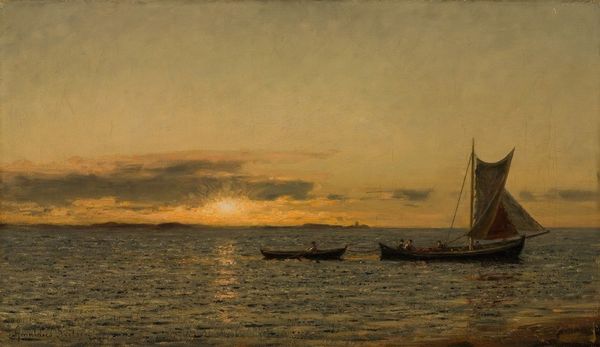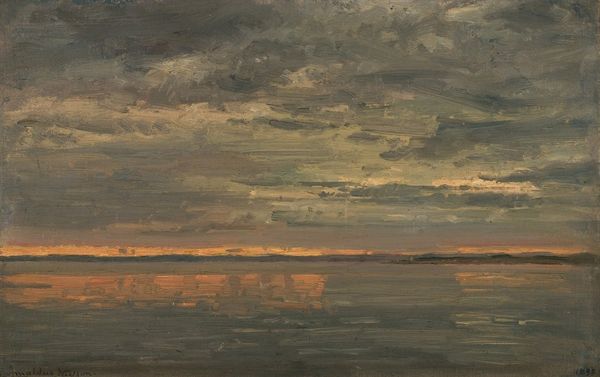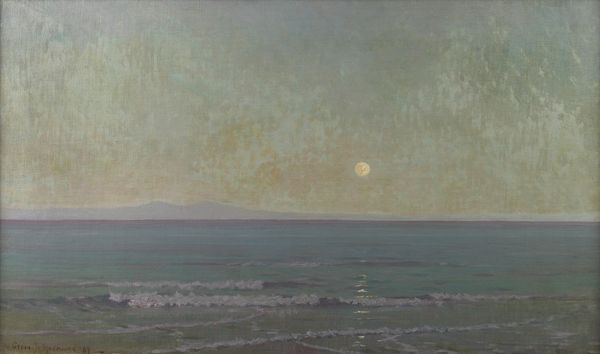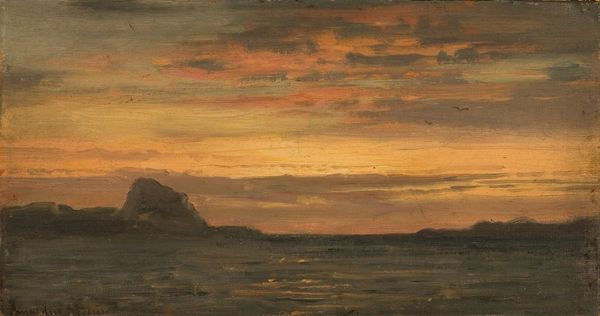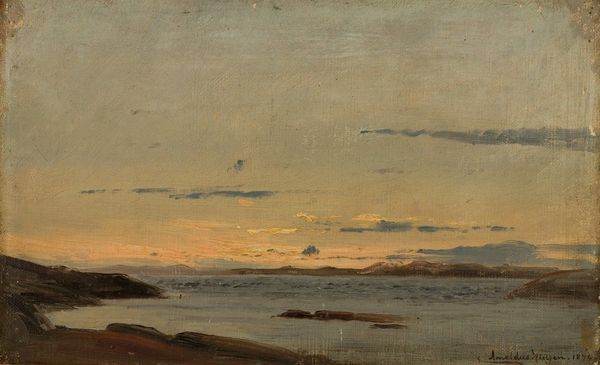
Copyright: Public Domain: Artvee
Editor: So, this is "Aften, Hvaler" painted by Amaldus Nielsen in 1896, made with oil paint, maybe with some watercolor mixed in... The way the water is painted looks very tangible, I can almost feel the breeze and humidity of the scene. What can you tell me about this painting? Curator: Well, look at the surface. The visible brushstrokes tell a story about the very act of its making. Oil paint in the late 19th century was becoming increasingly accessible, allowing artists to move outdoors and capture fleeting moments directly. What does that shift in materiality and access suggest to you about the artist's intentions and the art market itself at the time? Editor: It’s interesting that you focus on the process... Being able to acquire paint and easily work "en plein air" changes everything, of course. I guess the painting captures more the sensory experience than objective reality? Curator: Exactly! Think about the social context. Landscape painting became increasingly popular as industrialization changed the relationship between people and the natural world. Nielsen’s choice of subject and his painterly technique—the visible labor, so to speak—position this work within that broader cultural shift. What materials would a contemporaneous urban painter utilize, in contrast? Editor: Maybe darker hues of paint from polluted skies, a focus on industrial landscapes? Different subjects also imply a different target market too, I presume... I never thought of landscapes as tied to industrialisation. Curator: Precisely. And remember, Nielsen's impressionistic brushstrokes – what do they tell you about the consumption of art during this period? Is it about precise details or about evoking an atmosphere, a feeling? Editor: Right. It's more about the experience. All this shifts my focus from subject to the painting as an object in itself! Curator: I'm glad to hear that. So much of what seems "natural" in art is actually tied to material conditions and modes of production. It shapes what we create and, ultimately, how we see the world. Editor: Yes, understanding those forces can really open up how we experience art. Thanks for highlighting all of this.
Comments
No comments
Be the first to comment and join the conversation on the ultimate creative platform.

